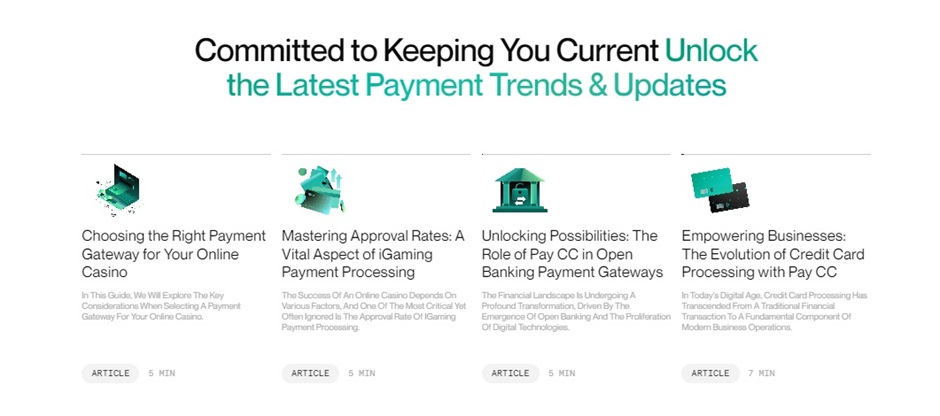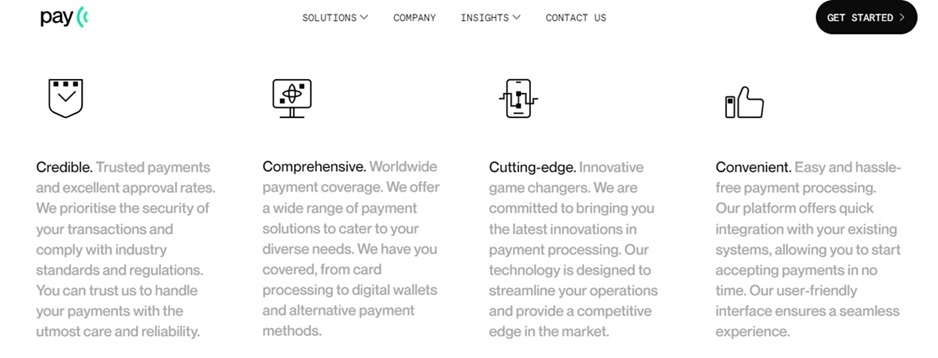In today’s fast-paced economic world, where everything connects through e-commerce, finding a reliable iGaming payment gateway for your business transactions is crucial. A payment processor like Pay.cc ensures that its users get security and can efficiently do transactions without any trouble.
By acting as a link between the bank and the merchants, the iGaming payment processing service providers play the most important role. However, these payment processors tend to treat each merchant in a different manner. This is because some of the merchants are classified as high-risk and hence, business owners need to understand the standards that apply to this categorization.
Payment processors are essential in establishing this status since they consider several variables, including chargeback rates, transaction volume, and industry type. Being able to analyze these factors is extremely crucial for merchants, guaranteeing adherence and enabling safe payment procedures for everyone.

What Do You Mean by a High-Risk Merchant?
Do you know how a particular business is classified as a high-risk business? Let us first understand the idea of a high-risk merchant. Basically, a business that presents a higher-than-usual risk in terms of a financial loss to the payment processor is considered as a high-risk merchant.
This categorization doesn’t necessarily indicate fraudulent behavior but rather indicates heightened uncertainty in the transaction. Businesses in industries such as adult entertainment, iGaming, etc., are exposed to the risk of high chargeback rates. As a result, payment processors don’t want to provide services to them.
Key Factors Evaluated by Payment Processors
Payment processors carefully consider a number of factors to assess a merchant’s risk level. First, they examine the industry the merchant works in, taking into account things like chargeback rates, regulatory compliance, and previous results in that field. Many industries face high-risk classifications due to their intrinsic characteristics and associated challenges, including adult entertainment, supplements, etc.
Payment processors also closely examine the merchant’s chargeback history, searching for trends that could point to problems with the quality of the product, dissatisfied customers, or fraudulent behavior. Elevated chargeback rates may give rise to apprehensions and be a factor in a high-risk classification. Payment processors like Pay.cc also evaluate other important variables.
These include volume of transactions, credit history, location, kind of goods or services, adherence to industry standards, and reputation. A greater risk assessment may result from an abnormally large transaction volume, a bad credit history, or noncompliance with industry norms.
Furthermore, a merchant’s reputation is shaped by their prior behavior and position in the market which is a crucial factor in assessing risk. Payment processors may subject companies with a damaged reputation to closer examination and even label them as high-risk merchants.
Effect of these Outcomes on Merchants
A business that is classified as a high-risk merchant faces several consequences, even though it does not necessarily mean that it will fail. High-risk merchants often face higher processing costs, stricter terms and conditions, and the potential for reserves to be withheld by the payment processor to cover chargebacks.
Payment processors take these steps to protect themselves from any financial losses linked to transactions with a high degree of risk. So, if your business is deemed high risk, you might find a payment processor but it will come with stricter requirements than the conventional one.
Ways for Merchants to Navigate the High-risk Businesses
Is your business categorized as a high-risk business? There are some tactics that you should use in order to strengthen your position in the market. In order to reduce the possibility of fraudulent activities, you need to consider adopting strong fraud protection techniques. Moreover, you also need to provide your customers with exceptional customer service.
Quickly addressing customer complaints can also reduce chargebacks, ensuring accurate product information and an easy refund procedure. Furthermore, maintaining compliance with security standards and industry regulations lowers risks and builds payment processor trust. Keeping a careful check on your chargeback rates and analyzing them frequently helps in identifying the root causes and applying the required adjustments.
In addition, you need to pay attention to keeping your credit profile clean by paying your bills on time and handling debt sensibly. By providing a variety of payment choices, you can increase the size of your clientele and reduce the possibility of chargebacks resulting from payment disputes.

Conclusion
For online businesses in today’s technological era, it is important to understand how payment processing service providers determine the risk level of merchant. Through this article, you will be able to understand why having a payment processor for your iGaming payments is important. Through comprehension of the factors that contribute to a high-risk classification, merchants can proactively mitigate risks and improve their position. High-risk merchants may face difficulties, but they may overcome them if they plan ahead strategically as well as follow industry standards.







